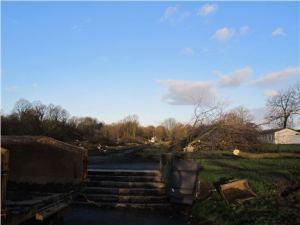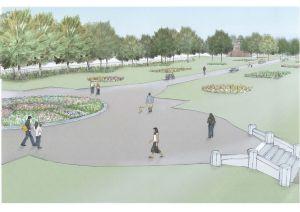So in a week when protestors take to the trees in the park to stop felling work, we have a look at both sides of the planned development.
Green space and parks are so precise in our city. Even an “underused” park like Alexandra Park will be used and loved by many. A quick walk around the park, which is bordered by Moss Side and Whalley Range, you will see that there are areas of neglect, particularly the buildings and facilities.
So development is needed and timely, but what kind of development is wanted and appropriate. What are the real concerns, desires and needs of the users and future users of the park? As an environmental and community organisation we are always going to look for Climate Change adaptation, biodiversity, equality and social cohesion to be at the top of every proposal.
As always in our society, the way these situations play out is so heavy bias towards those who have the money, in this case Manchester City Council and The Lottery Heritage Fund. For me there are two outcomes I would like to see from this. First, why does the Lottery Heritage not hold the principles above as important as restoration. They have a huge resource to call on and massive potential to be part of the solution. For them to not demand biodiversity and Climate Change adaptation into every investment they make is morally unjust.
Secondly, how does Manchester City Council learn from this and improve its consultation process. I would love to see them acknowledge that since there are people who are willing to put their own bodies in the way, of what they passionately feel is inappropriate in their community; this indicates there is a problem. The council’s figures show that 1773 people have been consulted during the funding application process. Were the right questions asked? Were the responses communicated well enough? I have been surprised by the amount of concern for the situation in the park, especially from outside the usual suspects of the “green movement”.
The debate will always be there to whether new investment in an area is more important than the disruption to the current residents and users. And it is evident that we have a long way to go in valuing our biodiversity. Manchester Climate Monthly, have an interesting response to the tree loss with good debate.
It is never going to be as simple as to spend the money or not, cut the tree’s down or not. The park definitively needs the money; otherwise £4.5m would never have been made available. As always it’s a question of scale and appropriateness, as this seemingly rational quote from Ian Brewer suggests “We’re not in favour of six tennis courts though, clearing the ground for that many courts means taking out about 30 mature ash trees. If they put four courts in they could do that without taking out any trees so I don’t know why they’re insisting on six.” from Manchester Confidential. Isn’t this kind of compromise that community consultation is all about?
Back the trees.

http://www.manchesterconfidential.co.uk/News/Alexandra-Park-A-Protest-Thats-Tree-Savvy-or-Tree-son
There is no doubt that the image of all the felled Sycamore trees does not bring out an emotional response. It also seems that the trees were offering some biodiversity value. A video of the park highlights some of the specific biodiversity niches of the park and its history. The more you read on the subject, the more it seems there is some element of misinformation coming from both sides. The information provided on the tree felling from the Manchester City Council is below. I would like to have the justifications of the felling examined, with the outcome of there authenticity used as a template for further felling within the whole city not just Alexandra Park.
I have always been inspired by the direct action element that has always been so prevalent in Manchester’s history. As a pragmatic activist I see the resulting direct action as an indicator that a lot more is yet to be done.
Information from Manchester City Council on tree felling:

Overall, 90% of the tree stock in the park will be retained. Alexandra Park covers an area of 60 acres; it has a stock of 1590 individual trees and 12 groups of mixed broadleaved trees within the boundary walls meaning the park is oversubscribed with trees. Whilst some have been planted many are self sown and have developed within shrubberies which are dense, creating areas of the park which people have expressed concerns over personal safety.
As part of the restoration 258 trees will be removed; 53 of these have been identified in the tree survey as needing to be removed for arboricultural reasons including being poor quality specimens; 58 trees will be removed to address issues of personal safety. Other trees will make way for new park facilities as part of the restoration.
92 trees will be planted in the park including varieties already present such as Lime, London Plane, Poplar, Hornbeam and Cherry and adding new species such as Whitebeam, Rowan, Apple, Plum, Fig and Pear trees bringing greater diversity to the tree species in the park. Also being planted is 7000m2 of a variety of plants and shrubs creating an area rich in flowering plants and berries essential to improving the biodiversity in the park and a home for wildlife.
The raised terrace comprises mainly sycamore and maple trees that were planted in the 1970’s.These particular non-native trees are considered to be highly invasive and have limited conservation value according to the Greater Manchester Ecology Unit. The reason for felling the trees in this location is to restore the terrace as an open raised area with wide footpaths, colourful planting displays and views across the rest of the park. The location and dense canopies of the existing trees does not enable the introduction of footpaths or planting. Replanting in the park now will help to secure the future of the park, providing variety in the age of the plants.
